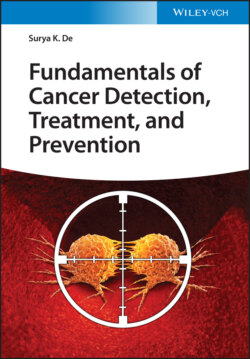Читать книгу Fundamentals of Cancer Detection, Treatment, and Prevention - Surya K. De - Страница 31
1.7.3 DNA Repair Genes
ОглавлениеThese genes take care of mistakes that occur during the process of DNA replication. Usually, these are tumor suppressor genes. If an error occurs in a DNA repair gene itself, however, its important correction function ceases, and errors in DNA copies can be mutations that might lead to cancer. Mutations in tumor suppressor genes (including BRCA1, BRCA2, and p53, which are all DNA repair genes) or oncogenes create the greatest likelihood of cancer occurring. Lynch syndrome is one of many genetic conditions originating from hereditary DNA repair gene mutations. Mutations of DNA repair genes can also be acquired.
Scientists know a lot about how cancer genes work. Many cancers, however, are not linked to one specific gene, but more likely result from multiple gene mutations. In addition, some studies suggest that genes interact with their environment, further complicating the current understanding of the role genes play in cancer. Each person's cancer has a unique combination of genetic changes, and as cancer develops, additional mutations occur. Even within same cancer, different cells may have different genetic alterations.
Given the earlier complexity, scientists continue to study how genetic changes affect cancer development. This information has led to improvements in cancer treatment, including early detection, risk reduction, the use of targeted therapy, and survival. Further research will provide additional understanding and a better overall outlook on the effects of this disease.
